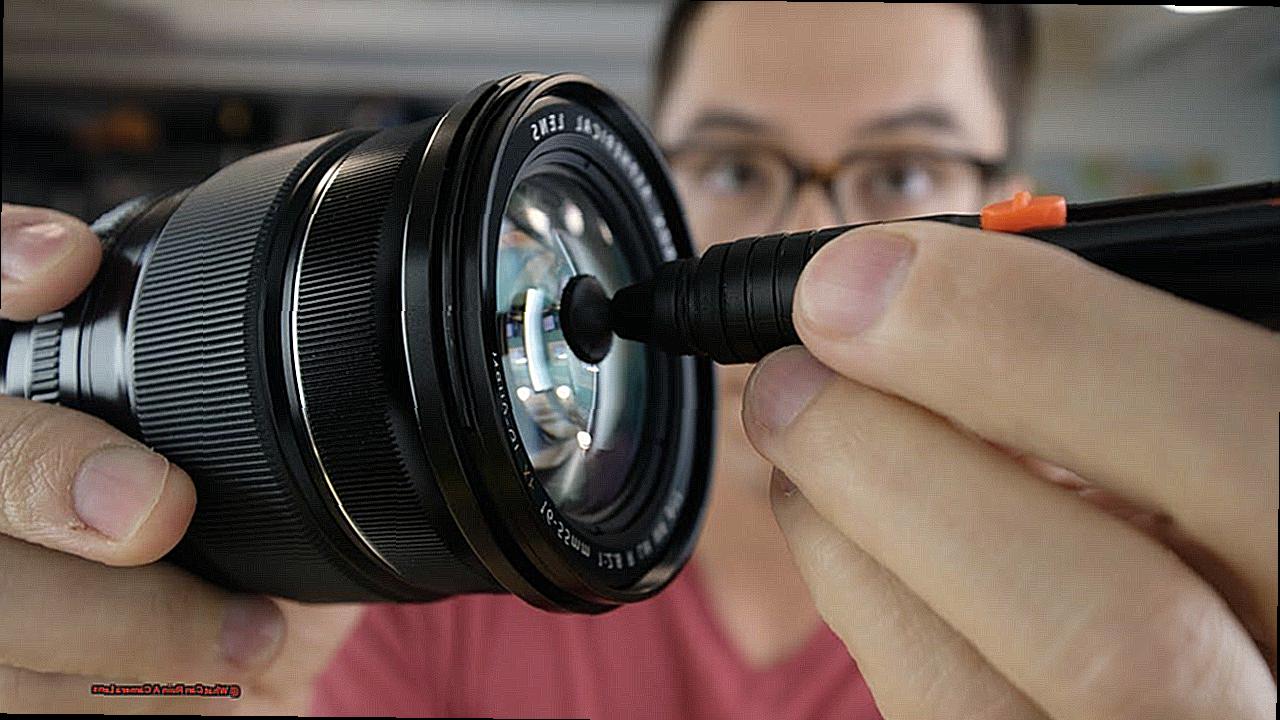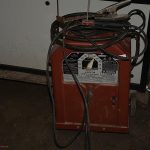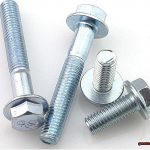Welding is a crucial aspect of our craft, enabling us to fuse and mold metal into impressive structures. But amidst the sparks and heat, have you considered the impact it may have on your health?
From toxic fumes to intense UV radiation, welding poses potential risks that can harm our well-being. In this blog post, we’ll explore which metals can make you sick while welding and share vital tips on how to safeguard yourself while maintaining top-notch workmanship.
So, don your protective gear and join us as we delve into this critical topic.
What Metal Makes You Sick When Welding?
Contents
Welding is a widely utilized technique in various industries, but it brings along its own set of hazards. As an experienced welder, I have witnessed the detrimental effects that prolonged exposure to certain metals can have on one’s well-being. In this blog post, I will delve into the specific metals that can be hazardous when welding, the health implications of extended exposure to these metals, and the safety measures that welders should take to shield themselves from toxic fumes, UV light, and IR radiation.
Which Metals Pose a Threat in Welding?
One of the primary dangers of welding is the inhalation of toxic fumes and gases. These fumes are generated when high temperatures are used to melt metal, and they can be harmful if breathed in. Certain metals are more perilous than others when heated, and it is crucial for welders to be cognizant of the specific types of metal being used.
Steel, aluminum, and copper are among the most commonly employed metals in welding, but they can emit hazardous substances into the air when heated. Manganese, commonly present in steel, can cause a condition known as metal fume fever when inhaled. This ailment is characterized by flu-like symptoms such as fever, chills, headaches, and nausea.
Lead is another perilous metal that may be present in welding materials. When consumed or inhaled, it can result in lead poisoning, leading to severe neurological and developmental issues. Nickel and chromium, typically found in stainless steel, can cause respiratory irritation and allergies when exposed to high temperatures during welding. Long-term exposure to these metals has also been linked to lung cancer.
Which Metals Cause MFF?

The hazards of welding are not a foreign concept to you, a skilled welder. From the dangers of UV light and IR radiation to the toxic fumes and gases that can be emitted, it is crucial to take proper safety precautions in this line of work. One of the most prevalent health risks in welding is metal fume fever (MFF). This condition arises from exposure to certain metals and their fumes, causing flu-like symptoms like fever, chills, and body aches.
But which specific metals are responsible for MFF? Let us delve into the intricacies.
Zinc-Coated Metals and Alloys
Zinc-coated or galvanized metals are often utilized in welding operations due to their durability against corrosion. However, when heated during welding, zinc releases fumes that can lead to MFF. These fumes may also contain other hazardous elements such as copper, iron, and aluminum.
Metals and Alloys Containing Zinc
Aside from zinc-coated metals, other metals and alloys that contain zinc can also cause MFF when heated during welding. These include brass, bronze, and certain types of steel. It is vital to note that although these metals may not have high levels of zinc, the fumes produced during welding can still pose a threat.
Copper
Copper is commonly found in welding operations as part of brass and bronze alloys. When heated, copper can release toxic fumes that result in MFF. Prolonged exposure to copper fumes has also been linked to respiratory issues like bronchitis and asthma.
Iron
Iron is another frequently used metal in welding operations. While the fumes produced by iron may not be as toxic as those from other metals, prolonged exposure can still lead to MFF. Iron fumes have also been known to cause respiratory problems and aggravate existing conditions.
Aluminum
Aluminum is a lightweight metal that is often utilized in welding due to its strength and versatility.
Symptoms of Metal Fume Fever
Welding, a trade of immense historical significance, has undergone technological advancements that have enhanced its efficiency and safety measures. However, one peril still lingers – metal fume fever. This ailment, also known as “welder’s flu,” is caused by the inhalation of welding fumes and can manifest in a range of perplexing symptoms that may emerge up to 24 hours after exposure.
The most frequently observed symptoms of metal fume fever include chills, muscle aches, coughing, and an unpleasant metallic taste in the mouth. In addition, fatigue, chest soreness, and nausea may also afflict the affected individual. These symptoms are a manifestation of the body’s reaction to the noxious substances found in welding fumes. While these symptoms may cause discomfort, they typically ameliorate throughout the work week despite ongoing exposure.
It is important to note that welding fumes can also irritate other areas of the body such as the eyes, chest, respiratory tract, nose, and throat. This irritation can lead to further discomfort and health complications if not appropriately addressed.
So how can you protect yourself from metal fume fever? First and foremost, it is imperative to wear adequate personal protective equipment while welding, including a respirator mask to prevent inhalation of fumes. Additionally, ensuring proper ventilation in your workspace can help reduce the concentration of fumes in the air.
If you do experience symptoms of metal fume fever, it is crucial to seek immediate medical attention. Your physician can provide treatment for your symptoms and offer guidance on how to prevent future occurrences.
In summary, being cognizant of the symptoms of metal fume fever is crucial for maintaining the safety and well-being of welders. By taking appropriate precautions and seeking medical assistance when necessary, we can continue to reap the benefits of welding without jeopardizing our health.
Understanding the Mechanism of MFF
Welding, a fundamental technique utilized in a myriad of industries to connect metal components, may appear innocuous. However, hidden beneath the incandescent sparks and scorching heat lies a perilous threat – metal fume fever (MFF). As an authoritative figure on this subject matter, I am compelled to delve deeper into the intricate mechanism of MFF and its detrimental impact on welders.
What is MFF?
Metal fume fever is a respiratory affliction triggered by welding with specific metals like zinc, copper, and magnesium. During the welding process, these metals vaporize and release noxious metal oxide fumes. Upon inhalation, these fumes can irritate the respiratory tract’s lining, resulting in inflammation and a spectrum of symptoms.
Symptoms of MFF
The onset of MFF symptoms typically occurs within 4-12 hours post-exposure and can persist for up to 48 hours. The most prevalent indications include pyrexia, chills, cephalalgia, lethargy, and myalgia. However, in severe cases, MFF can also induce dyspnea, chest constriction, and impaired pulmonary function. Furthermore, prolonged exposure to metal fumes can escalate the likelihood of chronic respiratory disorders such as asthma and bronchitis.
Preventing MFF
It is imperative for welders to exercise precautionary measures to avoid MFF and other health complications associated with welding. This entails donning appropriate personal protective equipment (PPE) like a respirator or mask specially designed for welding tasks. Additionally, employers hold the responsibility of implementing adequate ventilation systems in the workplace to diminish the concentration of metal fumes in the air.
The Significance of PPE and Adequate Ventilation
Donning proper PPE is crucial for welders as it serves as a safeguard against inhaling harmful metal fumes.
The Risk of Developing MFF on Mondays
There is one risk that may not be on your radar – developing metal fume fever (MFF) on Mondays. Let me shed some light on this overlooked concern.
MFF, also known as “welder’s fever” or “brass founders’ ague,” is a respiratory illness that affects welders who inhale toxic fumes and gases while working. These fumes are emitted when heating certain metals like zinc, aluminum, and copper, and can cause severe irritation and inflammation in the respiratory system.
Now, you may wonder, why Mondays specifically? Well, let me delve into the contributing factors.
Firstly, many industries that require welding operations have a high production demand at the start of the week. This means that welders may have to work longer hours on Mondays to meet these demands, exposing them to higher levels of metal fumes.
Furthermore, after a weekend break, ventilation systems in these industries may not be running at full capacity. This can result in poor air quality in the workplace and a higher concentration of metal fumes, increasing the likelihood of welders inhaling them and developing MFF.
Additionally, welders working on Monday mornings may also be exposed to residual fumes from the previous week’s welding activities. These fumes may have settled on surfaces and equipment in the workplace and can become airborne again during Monday’s operations.
But it’s not just physical exposure that poses a risk. Mental fatigue can also play a role in increasing the chances of developing MFF on Mondays. After a restful weekend, welders may experience fatigue that can affect their alertness and concentration while working. This can lead to potential mistakes or accidents that can increase their exposure to dangerous metal fumes.
Debunking the Myth: Can Drinking Milk Prevent MFF?
The notion of using milk as a remedy for MFF has been passed down through the ages. It is believed that the calcium in milk can counteract the toxic fumes inhaled while welding. However, there is no scientific evidence to support this claim. In fact, consuming milk may even make you more vulnerable to toxic fume poisoning.
Let’s delve into the science behind this phenomenon. When welding, you are exposed to a multitude of hazardous substances like zinc, copper, and lead. These metals can release fumes that are detrimental if inhaled. When these fumes enter your body, they can trigger a range of symptoms, including fever, chills, headaches, and nausea – all classic signs of metal fume fever.
But why would drinking milk worsen the situation? Well, studies have revealed that consuming dairy products before exposure to toxic fumes can escalate the absorption rate of these harmful substances into your body. This means that instead of neutralizing the fumes, the calcium in milk can actually facilitate their entry into your system at a faster pace.
So what steps can you take to protect yourself from MFF? The key is prevention. Always ensure that you wear proper personal protective equipment (PPE) while welding, such as a respirator or mask. It is also crucial to adhere to safety guidelines set by renowned organizations like the American Welding Society.
Precautions for Welders Working with Zinc and Other Metals
Precautions for Welders Working with Zinc and Other Metals
As a skilled welder, safety is always your top priority. Whether you’re working with stainless steel, aluminum, or zinc, taking necessary precautions to protect yourself from hazardous fumes and other potential risks is crucial. In this blog post, we will delve into the specific precautions that must be taken when welding with zinc and other metals.
Utilize Proper Safety Equipment
Prior to beginning any welding work involving zinc or other metals, it is imperative to have the correct safety equipment. This includes wearing an apron to shield yourself from heat and weld spatter, a respirator to prevent inhaling zinc fumes, a helmet or welding mask to safeguard your eyes from sparks, and welding gloves to protect your hands. These items act as a barrier between you and potential hazards, so ensure they are in good condition before starting your project.
Ensure Adequate Ventilation
Ventilation is crucial when working with zinc or other metals as the fumes produced during welding can be harmful if inhaled. If working indoors, ensure windows are open to allow for proper air circulation. If possible, work in an open space or use a fan to direct the fumes away from your work area. Additionally, consider investing in a fume extractor to eliminate harmful fumes directly from the source.
Use the Appropriate Welding Machine and Consumables
Using the correct welding machine and consumables is vital for your safety when working with zinc or other metals. Be sure to use a machine specially designed for welding these types of materials and follow the manufacturer’s instructions for proper use. It’s also essential to use the correct electrodes and flux-cored wire for the specific job at hand. Using the wrong ones can result in poor weld quality and increase the risk of accidents or injuries.
Conclusion
In the world of metalworking, welding is an essential skill. However, it comes with its own set of risks. As we have delved into in this blog post, certain metals such as zinc, copper, and aluminum can release harmful fumes when heated during welding. These fumes can cause serious health problems if proper precautions are not taken.
As fellow metalworkers, it is our responsibility to prioritize our safety while also maintaining high-quality work. This means wearing the necessary personal protective equipment, ensuring proper ventilation in our workspace, and using the appropriate welding machine and consumables for each job. It is also crucial to understand the symptoms and effects of metal fume fever so that we can identify and address any potential health concerns.
So let’s continue to gear up and take all necessary precautions when working with these metals. Our well-being should always be a top priority because a healthy welder is a skilled welder.





